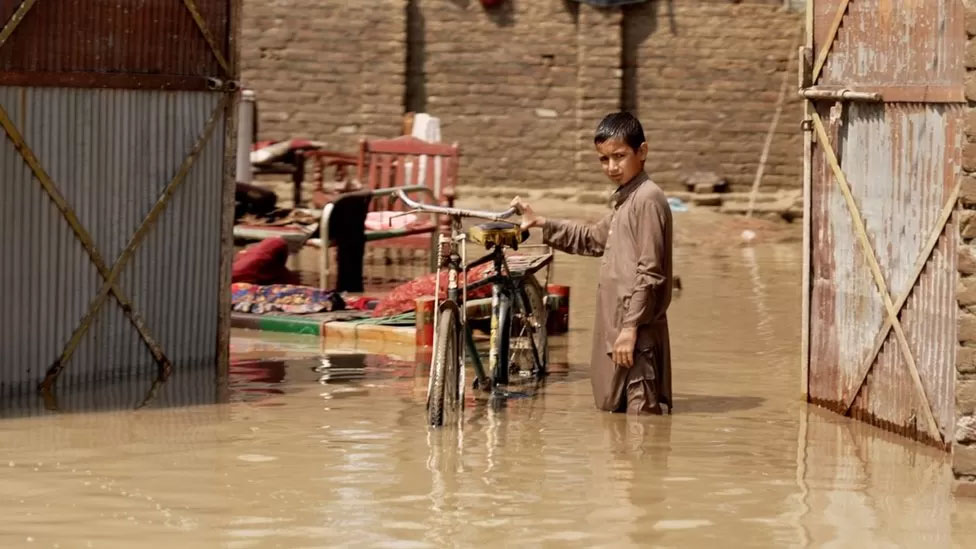30 August, BBC : The mammoth, unrelenting rains in Pakistan have destroyed homes and belongings, affecting tens of millions and leaving more than 1,000 people dead.
Two BBC correspondents, on the ground in the north and south of the country relay the devastation they’re seeing.
Nowshera, northern Pakistan
Secunder Kermani
Wading through the flood-ravaged streets of the suburbs of the northern town of Nowshera, residents are beginning to try and return to their homes to inspect the damage and see what they can salvage.
Some used black rubber tubes to help float along the muddy brown water, which at times reached up to their chests, others stepped gingerly through it.
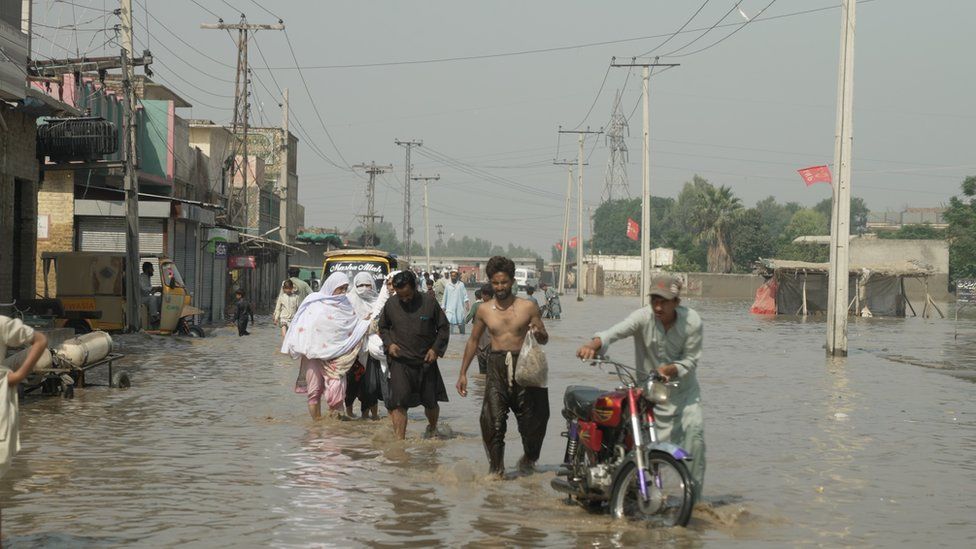
Imadullah, a chef, with his young son perched above his shoulders, had just managed to reach his family home. All their belongings were piled up, covered in mud and largely unusable.
https://buy.tinypass.com/checkout/template/cacheableShow?aid=tYOkq7qlAI&templateId=OTBYI8Q89QWC&templateVariantId=OTV0YFYSXVQWV&offerId=fakeOfferId&experienceId=EXAWX60BX4NU&iframeId=offer_0e763acc7b457c03340a-0&displayMode=inline&widget=template&url=https%3A%2F%2Fwww.bbc.com
“We’ve got nothing left,” he told the BBC, “We couldn’t save anything, just our children’s lives.”
Further down the water-logged road, two women held onto each other for support as they tried to push forward to their home. But the water was too deep.
“We don’t know if it’s still standing or has fallen down,” said one, “I don’t know how we would rebuild it. We are living in a camp in a school. God is my witness, we don’t have any money.”
Hundreds of thousands of houses have been destroyed or partially damaged across the country, leaving millions homeless. Pakistani officials estimate around $10bn worth of damage has been done, raising concerns about food shortages with crops wiped out.
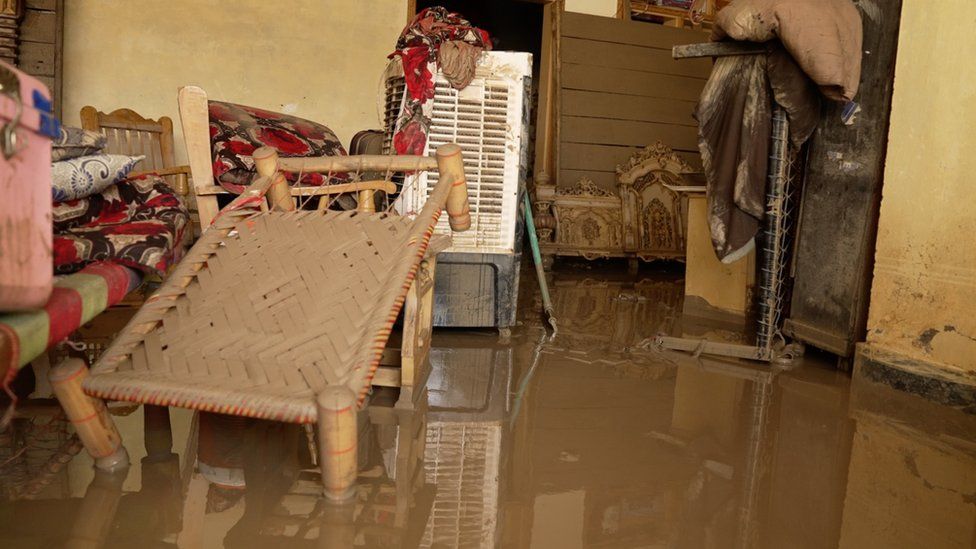
Many are now living in relief camps. Not far from Nowshera, hundreds of others have set up tents alongside the motorway, from where they’re able at least to keep an eye on their homes, hoping to be able to return as soon as the water recedes further.
“It’s so painful I cannot express it in words,” says Rozina, as her seven children mill around beside her.
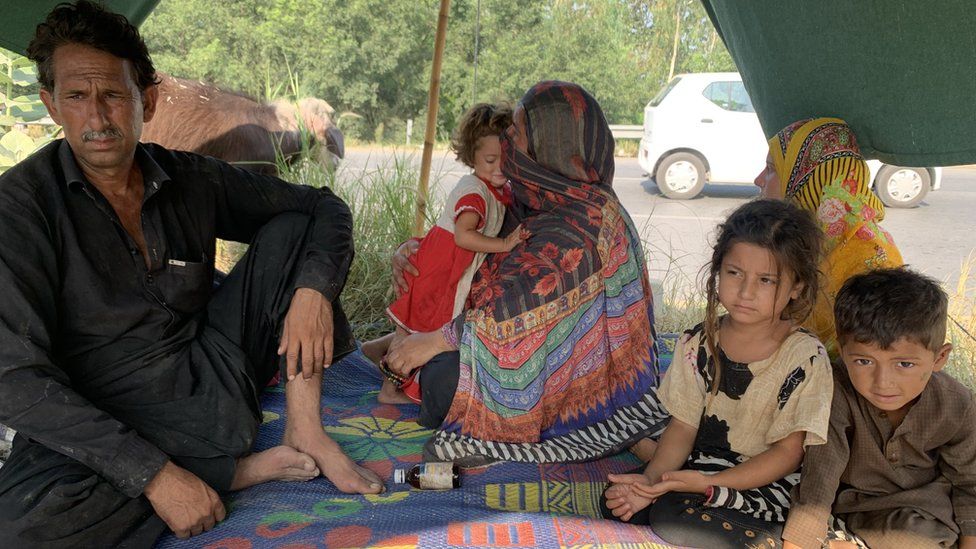
Heavy monsoon rains are an annual occurrence, but not on this scale. Parts of Pakistan have seen many times the amount of rain as during a typical year.
The summer rain is the heaviest recorded in a decade and government ministers say the country is paying the price for global climate change, despite only contributing to a small proportion of global emissions.
Speaking to the BBC at a briefing held for foreign journalists, Prime Minister Shehbaz Sharif dismissed criticism that officials had been slow to respond when the floods first began earlier this summer.
“We will certainly learn from our experience,” he said, “but the global community should stand by us today, it’s a yawning gap between our requirements and what we are receiving till this point in time.”
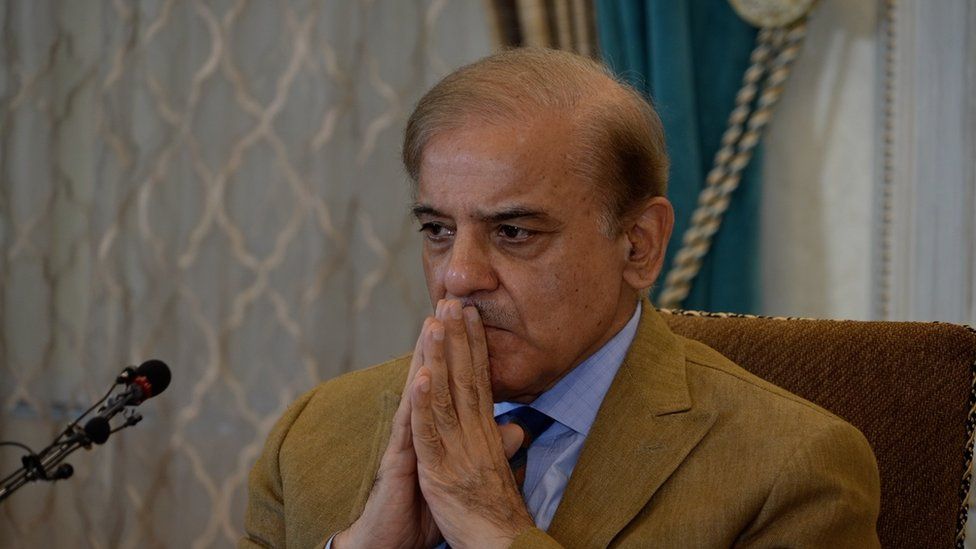
Saeedabad, south Pakistan
Pumza Fihlani
The rains have stopped in parts of Pakistan – but the destruction is nowhere near over. Heavy flooding in the north is travelling to the southern parts of the country where large swathes of land are already uninhabitable.
Hundreds of thousands of homes have been destroyed – and millions of people made destitute. In Saeedabad, in Pakistan’s Sindh province, hundreds of people are living on the side of a gravel road – where the road ends the waist-deep water begins.
In the distance you can see their homes, in some the waters reach as high as the window.
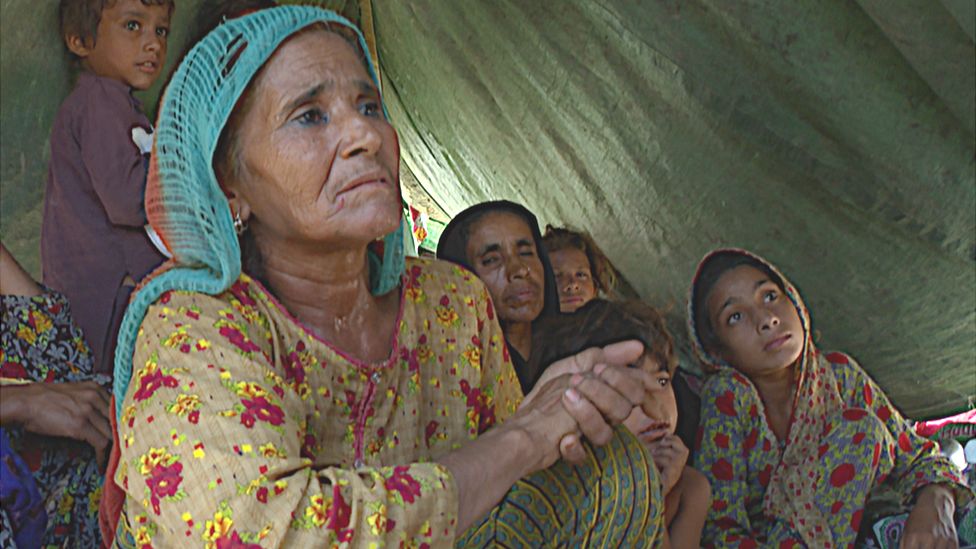
I met Banul in a tent with 15 children – some hers, others her nieces and nephews. She is happy they are all alive but now worried about that they will feed the children.
“We have been living here for weeks, no house, just one tent for all of us. We need help. We could only save our lives,” says Banul.
“Back home we were farmers. We had cotton, we had maize. Everything was ready – the water came and now everything is gone. We have nothing and no food.”
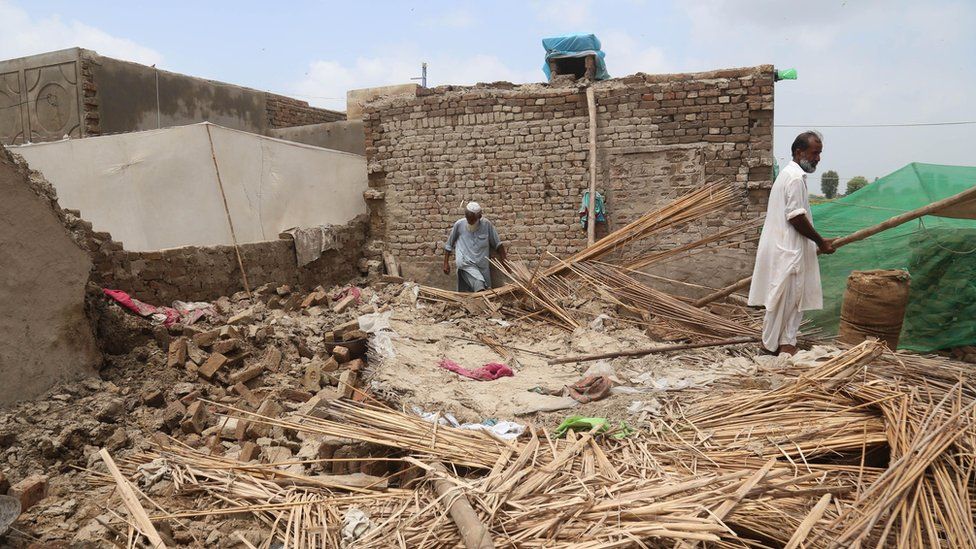
On this dirt road to nowhere, the people can go for days without eating sometimes. When a food truck comes by, the food runs out quickly and not everyone is fed.
Local workers are overstretched and say they don’t have enough resources. Relief efforts have been unpredictable, especially in far-flung communities where the untarred roads have been swallowed up by the waters.
One of the biggest challenges aid workers will face when or if international aid arrives, will be how to get it to everyone that needs it – when the roads are undrivable and thousands of people still trapped by water.
But for those people, aid is their last hope of surviving the tragedy that’s visited and taken so much from them.
Watch: Hundreds of people have been rescued from flooding in Pakistan


